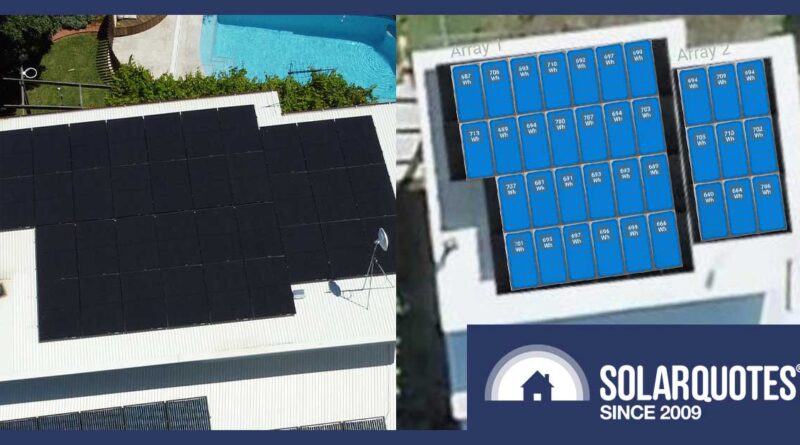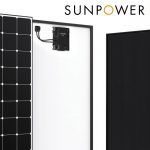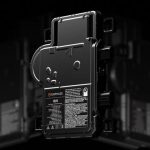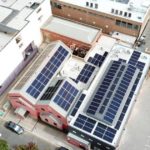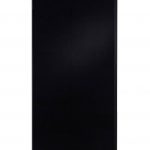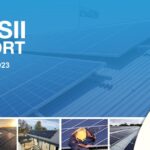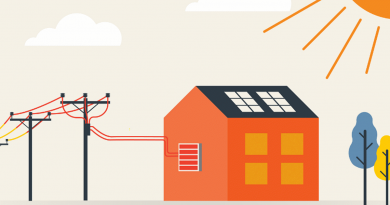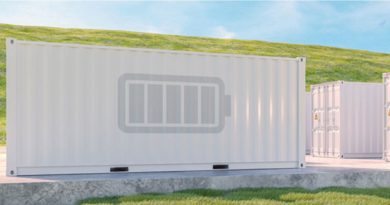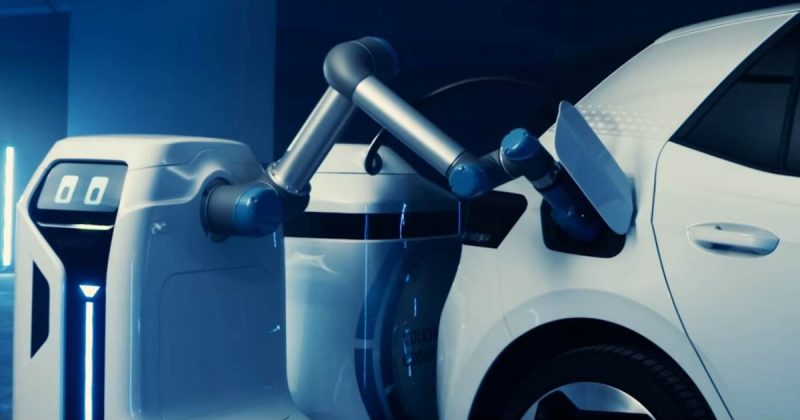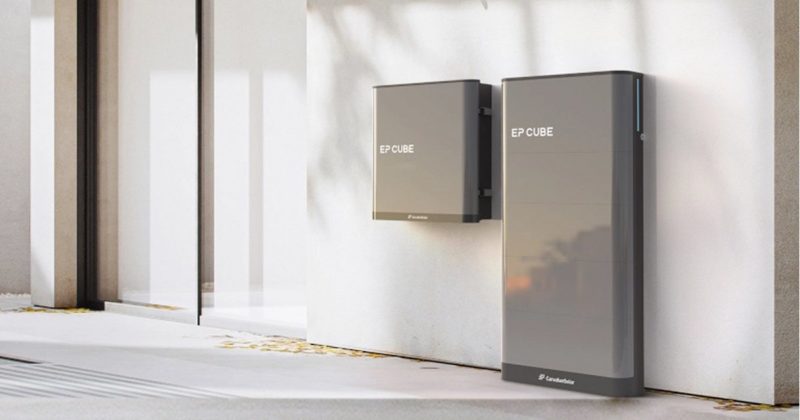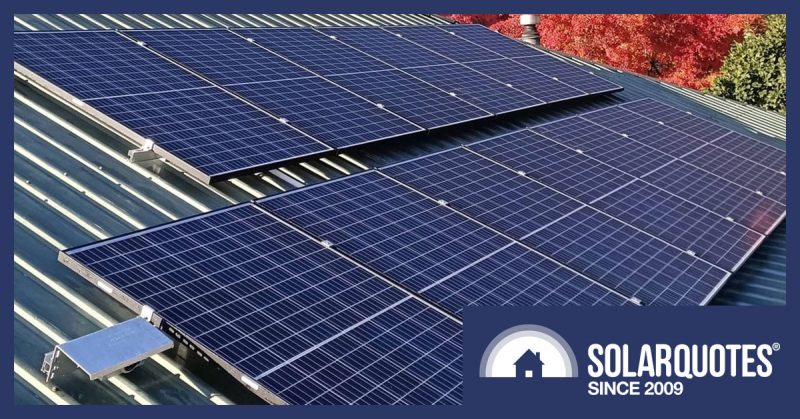Are Microinverters Or Optimisers Worth It?
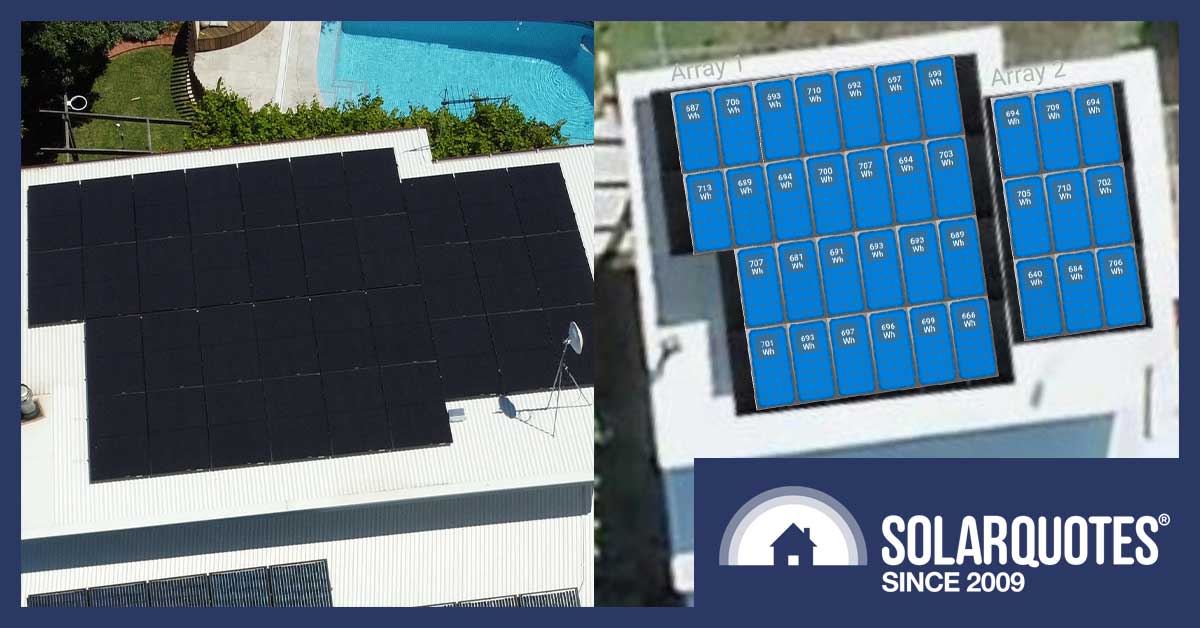
Solar panels with Enphase microinverters and panel level monitoring.
Today I’ll explore optimisers and micro inverters, just how they differ from more conventional solar gear, their advantages and their flip side: being complex and more expensive.
Like other facets of life, you can find solar has definite camps. Like the old Ford versus Holden, or maybe Collingwood vs anyone rivalry, people pick a particular technology and once they’ve chosen it can be hard to argue that there’s any other solution. When it comes to individually optimised panels, the industry calls this Module Level Power Electronics (MLPE) and in Australia, your choices are:
Microinverter Camp
- Enphase
- APS (for the brave)
Optimiser Camp
- SolarEdge (optimised string system – require an optimiser on every panel)
- Tigo (just optimisers – work with any brand of string inverter)
- iStore (conventional string system with optional optimsers)
Just What Is Optimisation?
If you’re looking to get the nth degree of yield from every single panel on your roof, then Module Level Power Electronics (MLPE) is what you want. MLPE is about tuning up the orchestra and hitting the high notes, because solar panels perform differently depending on angle, orientation, temperature and manufacture.
Identical Panels; Aren’t Actually
From the same production line, every panel made is slightly different, so quality control in mass production means items are tested for size, fit or performance; and then sorted into similar categories.
In solar, each panel is flash tested for power output to classify them. The upshot? Visually identical models can come in 400, 405, 410 and 415 watt sticker ratings.
Henry Ford made 60 million identical Model T pistons, but in reality there was a range of sizes. Grading for loose, standard and tight fit meant parts could be matched together, so fully assembled engines didn’t rattle or seize solid.
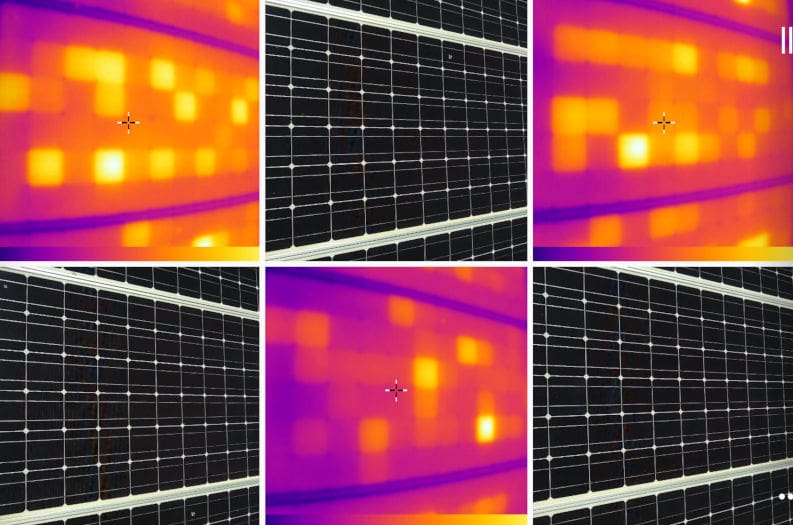
These cheap, rubbish panels were assembled with badly matched wafers. Thermal images show low performance/high resistance cells run hot, limiting the rest of the 3 series circuits in each panel.
Solar specifications used to say a panel was around 250 watts, ie plus or minus 3%. This is called a power tolerance. To differentiate themselves in the market, better quality modules began to offer positive 3% tolerance. It means that your panels do at least what it says on the tin, probably more.
When you assemble these panels into a series string, it means that the worst performer will govern how well the rest work. The chain will only be as good as its weakest link, but this becomes a bit irrelevant when 4oo+ watt panels are classed to within 2% anyway.
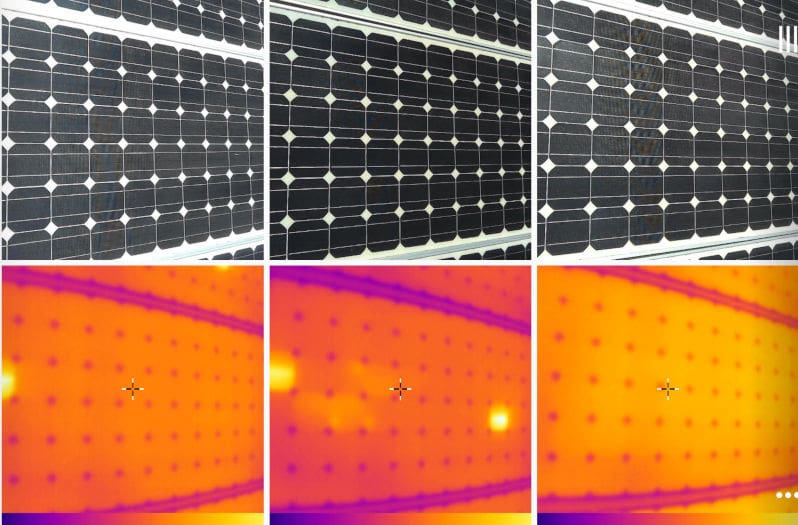
On the same roof, these much older panels show perfectly uniform cells, albeit with 3 suffering impact damage? This is the properly sorted, evenly matched quality control you get with genuine Japanese made Sharp Solar Panels.
Imagine All Your Panels In Parallel
If all the solar modules on your roof were independently optimised, instead of being chained up in a string, you could effectively harvest every single watt they’re capable of. Take two strings of 460 Watt REC alpha pure RX panels, (9.2kW) If they all over perform by 1% you’ll garner an extra 90 odd watts. Ready reckoning says that’s an extra 145kWh per year or 3 1/2 average days extra yield. Annually that’s $11 @ 8 cents for export or $72 @ 50 cents per kWh of displaced consumption.
Of course, this extra yield is handy but isn’t going to buy you a cattle station. And it doesn’t take into account the fact that optimisers or micro inverters are on the roof operating in a really hot environment where they may not be as efficient as a string inverter, which is downstairs in the garage, fan cooled hopefully.
What About Shade?
Modern panels are fundamentally better because half cell configurations are really two low current parallel panels, with more bypass diodes, under the same piece of glass. By design they perform significantly better than panels of 5 years ago. Despite this, it’s incredible that most solar panel manufacturers actually do not technically warrant their modules for installations in shaded conditions.
While optimisers on each panel can fine-tune the output of shaded single panels to contribute positively without adversely affecting the rest, the overall improvement isn’t as substantial as it once was.
Microinverters
If you have shallow roofs where running DC cables in conduit is problematic, or small complex multi level, multi orientation townhouses, then using AC wiring for individual micro inverters can really simplify installation. It’s arguably safer than 600 volts DC with an added bonus that no wall space is needed, you just connect straight to the nearest switchboard.
Though wiring is simpler, Enphase microinverters effectively rely on electrical noise for communications. High frequencies superimposed over the AC circuit can be fraught with some difficulty if there’s electrical interference from other appliances.
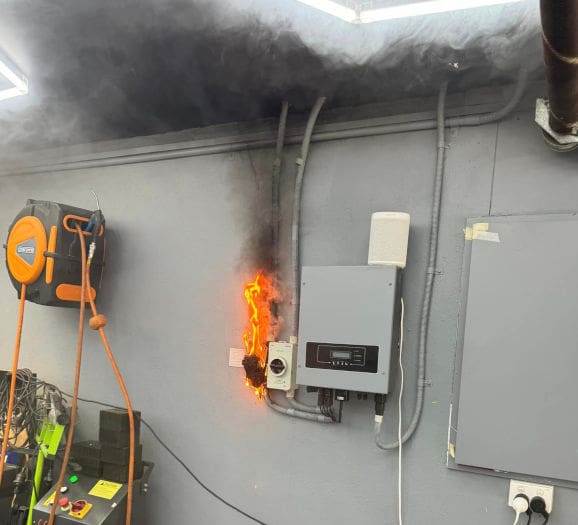
Rules have changed since this install, under new Australian standards this type of DC isolator failure is far less likely, but micro inverters eliminate the risk.
Enphase is excellent and premium products with good warranties generally don’t attract shoddy installers like cheap gear does.
The catch is that you need a healthy budget and you can’t DC couple a hybrid battery system with Enphase (or technically exceed 133% overdrive). AC coupled batteries are available but the Enphase 5p system is physically enormous per kWh stored compared to a Tesla Powerwall, with its more elegant and intuitive monitoring app.
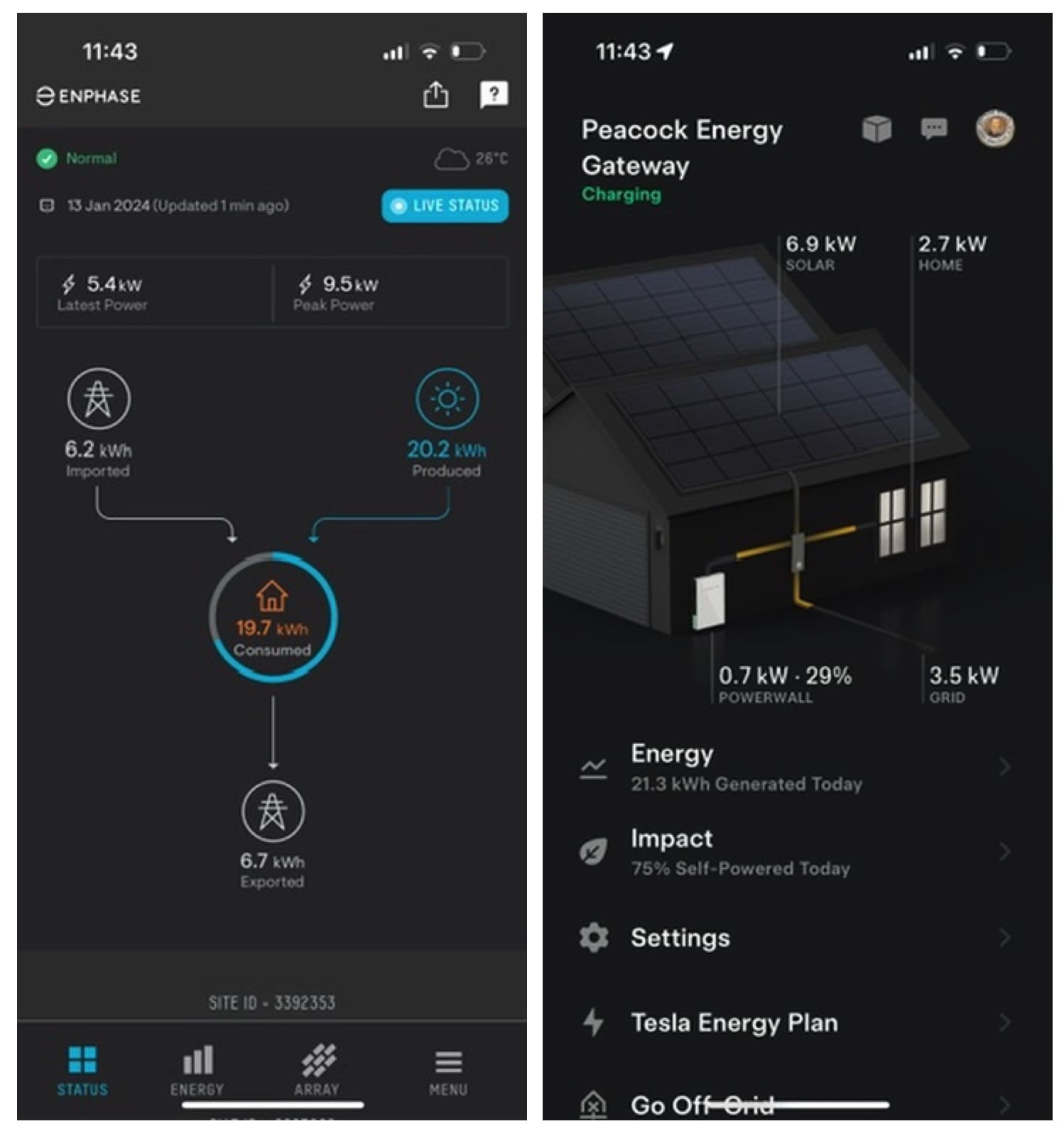
Enphase App & Tesla App home screens
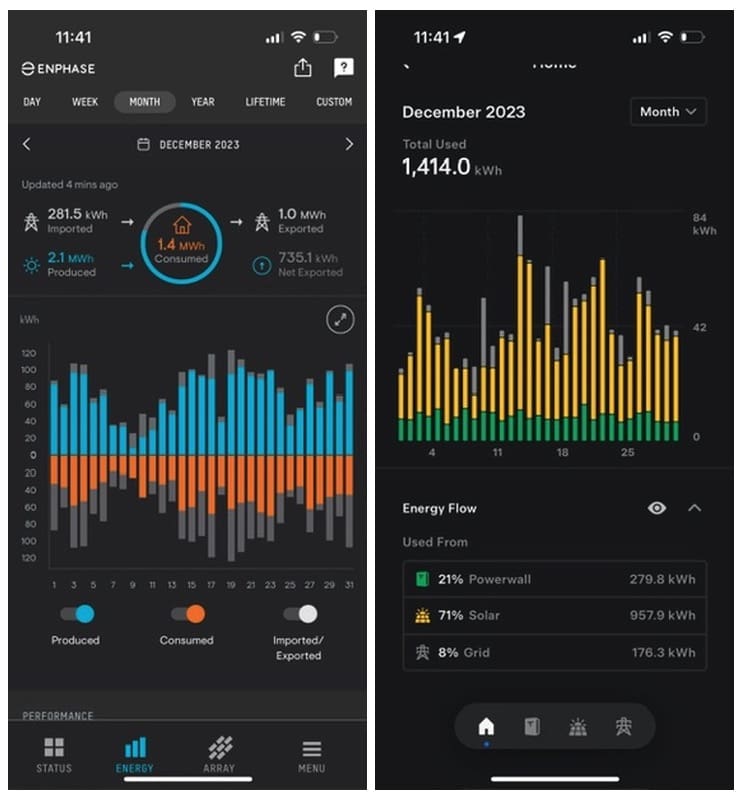
Enphase vs. Tesla app: monthly graphs
Optimisers
Instead of treating each panel as its own mini-system, optimisers adjust individual panel outputs to harmonise the entire array. A more conventional string inverter then takes care of converting the DC electricity into AC that you can use in the house. This approach means that optimised systems can work with difficult roofs, but they’re not perfectly flexible like micro inverters. Different brands have distinct methods but roughly speaking;
- Tigo TS4-A-O monitors panel output (using an extra piece of hardware you need for warranty & display) When a panel experiences shade, the Tigo offers a low resistance path for the rest of the string to shunt through, without excessive losses and stress on the bypass diodes in the panel. They’ll work with almost1 any panel and any string inverter.
- SolarEdge have a unique architecture where the inverter has a fixed input voltage, and the optimisers behind each panel are designed to buck or boost the panel output to match. They’re considered safe because if the optimisers lose connection to the inverter, they shut down and only deliver one volt each. Care must be exercised when designing the string layout and panel compatibility but they do offer some ridiculous panel oversizing and unique features like direct DC car charging.
- iStore2 take this architecture a step further with an inverter which has an adaptive input, like any other string inverter which hunts for maximum efficiency with an MPPT; however they also have optimisers which will condition the panel output for greater efficiency. The inverter doesn’t actually require optimisers and they’re more flexible than SolarEdge because of it.
What About Reliability?
Adding a layer of complexity is always fraught with some danger, especially when you’re dealing with different brands of gear. There’s examples of systems being broken by firmware updates that nobody wants to support if for instance you have replace parts.
Microinverters means more redundancy, but it cuts both ways. We’ve mentioned previously, MC4 connectors are pretty reliable but using optimisers means having twice as many potential points of failure.3 Some have optimisers built into panels themselves for simplicity, but if/when these panels/optimisers break, you’ll probably find they’re obsolete in a handful of years.4
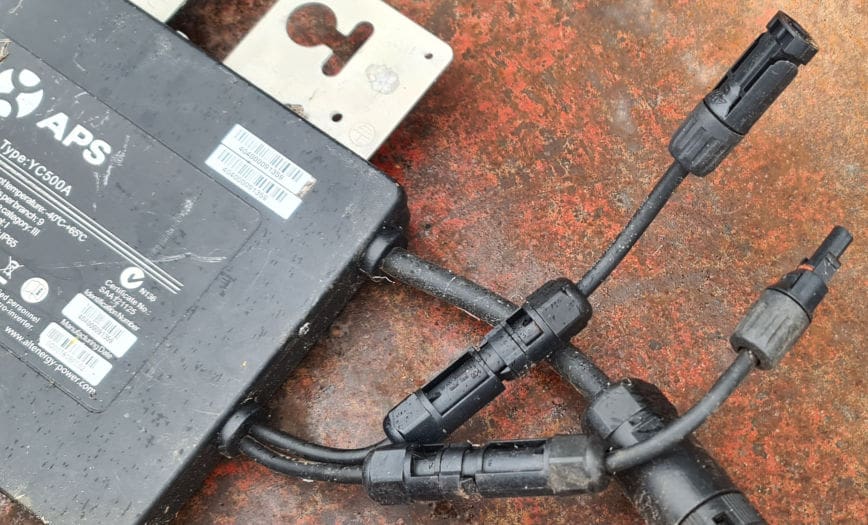
Three times more potential failure points. This APS micro inverter has adaptor leads to change the type of MC4 connector.
Panel Level Monitoring
Arguments for and against these technologies are muddied by what you might call the braggart effect. Cooking nerds may fawn over a Thermomix but I’ll argue they get conned into buying a $2000 appliance when a potato masher and my Nanna’s electric frypan does the same job. Of course nobody admits there’s a similar but less fashionable machine in the back of the cupboard or a box full of attachments you’ve forgotten exist.
Solar nerds will fawn over panel level monitoring for at least a fortnight. It’s a great selling point, people love the idea of buying it, but it seems most soon forget it exists. While having individual panel output information is novel, hiring 3 people and a scaffold to lift half of an array off the roof and replace failed equipment; is not going to be nearly as interesting. Inverters at ground level are easy to swap.
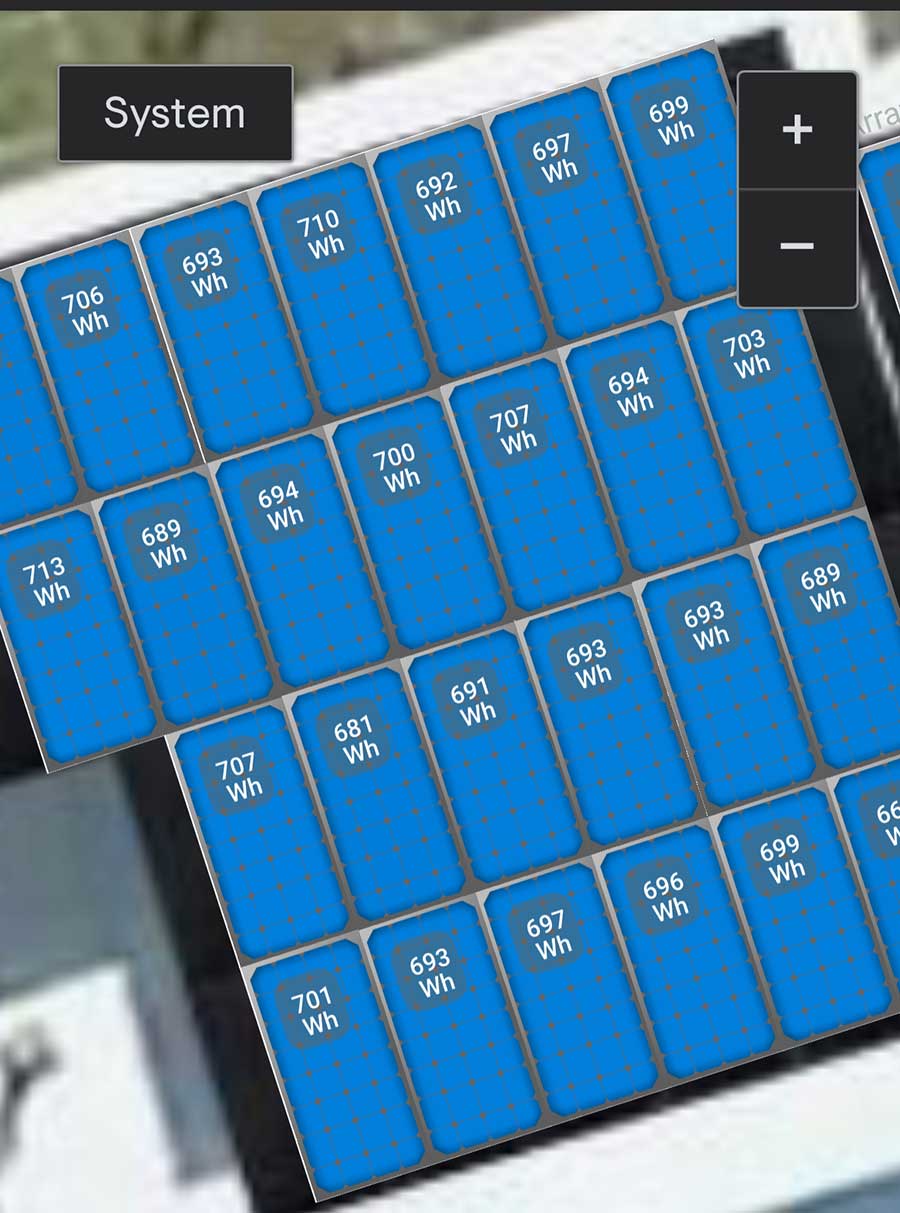
Enphase panel level monitoring
Should You Opt for MLPE?
Personally I can’t justify the expense of MLPE because I don’t have a complex roof or shade compromised outlook. However there is a niche for them, and great installers who tell me they sleep well having staked their entire operation on the technology. There’s certainly some efficiency to be had, both in yield for customers and simplified operations & support.
I would much rather spend my spare cash on an induction stove, a heatpump hot water or the highest efficiency panels you can get parked on any roof available. Even if they face the wrong way, a modern, quality string inverter will fill most roles admirably.
Footnotes
Original Source: https://www.solarquotes.com.au/blog/are-microinverters-or-optimisers-worth-it/

